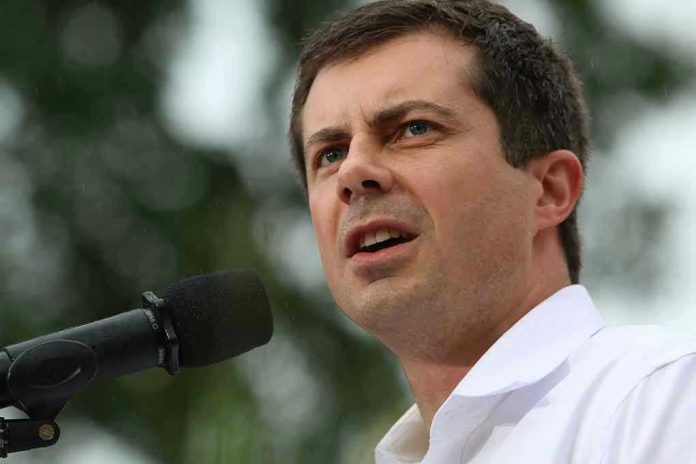
Can you believe that over $80 billion of taxpayer money was allegedly spent on Diversity, Equity, and Inclusion (DEI) initiatives under Pete Buttigieg’s watch, while our air traffic control systems and infrastructure crumbled?
At a Glance
- Pete Buttigieg’s Department of Transportation (DOT) allegedly spent over $80 billion on DEI programs.
- Critics argue this spending diverted funds from crucial infrastructure improvements.
- New Transportation Secretary Sean Duffy is reversing these DEI-focused directives.
- Ongoing scrutiny over the effectiveness and prioritization of DOT spending during Buttigieg’s tenure.
Massive Spending on DEI Initiatives
The Biden administration, along with Pete Buttigieg as the Secretary of Transportation, made DEI initiatives a central focus. According to reports, the DOT spent more than $80 billion on these programs, supposedly at the expense of much-needed infrastructure upgrades. Critics argue that this misplaced prioritization led to operational deficiencies, such as outdated air traffic control systems that directly affect public safety and efficiency.
While Buttigieg defended this approach, emphasizing the correction of historical inequities, many are left questioning if such social equity goals should overshadow the basic operational needs of our country’s transportation infrastructure. The huge sums directed toward DEI are now under intense scrutiny as the new administration re-evaluates these priorities.
The Shift in Focus Under Duffy
With Sean Duffy now at the helm as the Secretary of Transportation, there has been a significant shift in focus. Duffy has begun reversing Biden-era directives, emphasizing a return to “common sense” and prioritizing core infrastructure needs over DEI initiatives. This shift aims to address the glaring operational deficiencies that have plagued our transportation systems over recent years.
Duffy has publicly criticized past spending priorities, denouncing them as part of the “Green New Scam.” His approach aims to redirect funds to immediate infrastructure needs, such as modernizing air traffic control, which directly impacts the safety and efficiency of the nation’s airways.
Implications and Reactions
The alleged $80 billion expenditure on DEI has sparked a broader debate about how federal spending should be allocated, especially when critical infrastructure remains in dire need of attention. The shift to prioritize traditional infrastructure projects under Duffy’s leadership is seen as a corrective measure by critics of the previous administration.
Communities that benefited from DEI grants may see reduced funding, while the airline industry and travelers hope for improved safety and efficiency with the reallocation of resources. The public remains divided, with some advocating for the continuation of equity-focused policies and others demanding a back-to-basics approach that addresses immediate transportation needs.
Political and Economic Consequences
This controversy has only intensified the political debate over government priorities, efficiency, and the role of social equity in federal agencies. The economic implications are significant, as questions about the efficiency of federal spending and the opportunity cost of DEI programs versus infrastructure improvements continue to surface.
The DOT’s spending practices under Buttigieg have become a focal point for political discourse, influencing not only current policy but also the narrative around federal spending priorities. As investigations and congressional hearings progress, the need for transparency and accountability in how taxpayer dollars are allocated and spent is more evident than ever.
Sources:
U.S. Department of Transportation official statements and budget documents
Media reports and congressional commentary on DOT spending and policy priorities
U.S. Department of Transportation official statements and budget documents
Media reports and congressional commentary on DOT spending and policy priorities



